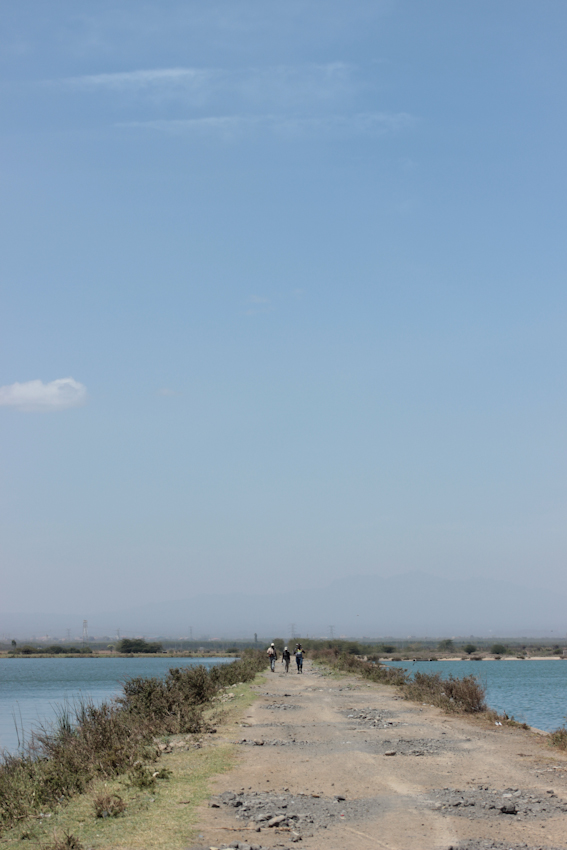Happy world Wetlands Day! If you didn’t know, now you do. What’s the significance of marking such a day? You may ask. Wetlands are important as they support livelihoods, the economy and provide ecosystem services like enriching soil, purifying water and sheltering endangered species. If you’ve been following this blog for a while, you may have noticed I’m an avid birder. Wetlands are especially important to birds as you shall read shortly.

They are vital bird habitats,which are used for nesting, breeding, and rearing young.Wetlands provide a source of drinking water and safe places for feeding, resting, shelter, and social interactions. Studies show that the survival of some waterfowl (e.g. grebes) as individual species , depends on the availability of certain types of wetlands because the birds have have adapted to wetlands to a great extent.

Every year, Nature Kenya organises water fowl counts in various wetlands. Results help to track the population growth/ distribution of bird populations, which is also an indicator of the status of the wetlands. This year I managed to take part in some of those counts. Two were at waste water treatment plants, and two more at lakes.

The count at Ruai waste water treatment plant was quite interesting. I had never even heard of the place before that day (gasp). Apart from a nasty smell, I didn’t know what to expect upon getting there. But it turned out to be fascinating! We left the National Museum at 8.45am and drove for what seemed like eternity. Finally at 9.40am, we arrived. A large number of swallows flying gracefully was a welcoming sight.

We were divided into groups and each was assigned its number of ponds. I was impressed by the beauty of the place. The large expanses of water with many flocks of birds- it was hard to believe we were at a waste treatment plant! And the smell wasn’t all that bad after all. I was assigned the role of scribe for my group. A scribe records the number of birds counted. The other group members each choose a species and count the birds from one part of the wetland to another.

The sun was blazing that day as if it was on a revenge mission. Not to be left behind, the wind also joined in and raged fiercely and almost blew our data sheet away. This gave me a hard time recording but I soldiered on. At some point we came across a monitor lizard. How much more interesting could the day get? I saw a number of birds for the first time, like Hottentot teal and White-winged terns. We counted more than 500 birds for the latter. Wow! Who would have thought that a waste water plant would be this captivating?

By the time all groups were done counting, more than 2 hours had elapsed. Yes, the place is that big. We were tired, hungry and dusty as if we had walked through the Kenyan diaspora. My skin felt like stretched animal hide due to the harsh wind. All in all, it was a great experience. I knew I would like to do it again- and I did. The next count was at Brookside Dairies waste water treatment ponds. And this past weekend, we were at Lake Bogoria and Nakuru (stay tuned, post coming soon). 🙂

I believe I made the right choice taking up bird watching- there’s much to be learnt every time and I get to see more of the beauty of our country. So get out there my fellow Kenyans and see for yourself! Travelling is therapeutic and opens your mind. You’ll never be the same after that. 🙂

Mother Nature never dissapoints
LikeLike
Indeed!
LikeLike
I love the pics. 😃
Goodstuff
LikeLike
Thank you Fiona. 🙂
LikeLike
I like the way you express and the info.photographs👌👌👌👌👌
LikeLike
Thank you for the support Shan! 🙂
LikeLike
“I believe I made the right choice taking up bird watching- there’s much to be learnt every time and I get to see more of the beauty of our country. So get out there my fellow Kenyans and see for yourself! Travelling is therapeutic and opens your mind. You’ll never be the same after that” Well said my friend
LikeLike
Indeed, our country is so beautiful and blessed.
LikeLike
Awesome, bird watching is an adictive hobby. Ornthology is a less exploited field in this country. It is great to see none ecologist (by formal training) coming up and capturing vital information that can be used even in schools. My vote #brandKenya.
LikeLike
Very true. Most people think about big game when talking about conservation. I hope to keep sharing the beauty of this country, especially the lesser known stuff.
LikeLike